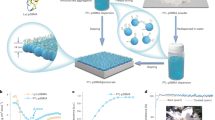Abstract
Three water soluble laundry polymers were employed for the first time in liquid detergent formulations for hard surface cleaning. The polymers included in the formulations were the sodium salt of maleic acid/olefin copolymer (P1, anionic), polyethyleneimine (P2, cationic), and polyethylene glycol-g-vinyl acetate (P3, nonionic). Commercially available surfactants (C10 Guerbet alcohol alkoxylate (FAEO), caprylyl/decyl glucoside (APG), and the sodium salt of ethoxylated alkyl ether sulfate (SLES) were chosen to formulate bathroom, kitchen, and all-purpose cleaners, which provide the desired broad of pH range for hard surface applications. Their hard surface cleaning efficiencies were also compared with an amphoteric polymer (amino modified polycarboxylate, P4) as amphoteric polymers are the most suitable structures for hard surface cleaning. The standard test method and the cleaning device, the so-called cleaning robot, were used to investigate the primary cleaning performances and synergies of the chosen polymers in a hard surface cleaners system. Secondary cleaning performance tests, which indicate the effects of the hard surface cleaners on surface modification, were also performed. The results revealed that the formulations containing P3 and P4 gave the better cleaning performance for primary cleaning tests whereas only P4-containing formulations showed the significant results for secondary cleaning tests.








Similar content being viewed by others
References
Michael S, Showell (2006) Handbook of detergents part d: formulations. Marcel Dekker, New York
Farone WA, Johnson KM, Palmer T (2006) Hard surface cleaner formulation and method of use. US Patent 7,910,532 B2
Malik AH, McDaniel RS, Verboom GML (1988) Alkaline hard-surface cleaners containing alkyl glycosides. US Patent H468
Andree H, Middelhauve B (1991) Possible applications of alkyl polyglucosides in detergents and dishwashing agents. Tenside Surfactants Deterg 28:413
Nickel D, Nitsch C, Kurzendörfer P, Von Rybinski W (1992) Interfacial properties of surfactant mixtures with alkyl polyglycosides. Prog Colloid Polym Sci 89:249
Ames GR (1960) Long-chain derivatives of monosaccharides and oligosaccharides. Chem Rev 60:541–553
Egan PA (1989) Surfactants from biomass. Chem Tech 758–762
Tsushima R (1996) Surfactants and related products from natural raw materials, in proceeding of the 4th world surfactants congress, asociación española de productores de sustancias para aplicaciones tensioactivas. Barcelona I:43
Balzer D, Huels AG (1991) Alkylpolyglucosides, their physicochemical properties and their uses. Tenside Surfactats Deterg 28:419–427
Palicka J (1997) Development and trends in the european laundry detergent market, third international symposium chemistry forum “97”. Editing Office TUW, Warsaw
Szymanski A, Wyrwas B, Swit Z, Jaroszynski T, Lukaszewski Z (2000) Biodegradation of fatty alcohol ethoxylates in the continuous flow activated sludge test. Water Res 34:16
Holmberg K, Jönsson B, Kronberg B, Lindman B (2002) Surfactants and polymers in aqueous solution, Wiley, New York
Bertleff W, Neumann P, Baur R, Kiessling D (1998) Aspects of polymer use in detergents. J Surfactants Deterg 1:419–424
Andree H, Krings P, Upadek H, Verbeek H (1987) Possibilities of combining zeolite with different cobuilders. In: Baldwin AR (ed.) Second World conference on detergents, pp 7–11
Zini P (1995) Polymeric additives for high performing detergents. Technomic publishing company Inc, Lancaster, pp 30–65
Jaeger H, Denzinger W (1991) Mode of action of polymers with dye transfer inhibiting properties. Tenside Surfactants Deterg 28:428–433
Holland RJ, Bullard OK,York AV, Boeckh D, Trieselt W, Diessel P, Jaeger H (1991) U.S. Patent 5,049,302
Boskamp JV (1989) European Patent Application 358472 A2
Albers T, Wild C (2007) Household and Personal Products Industry, pp 97–99
Jaynes SB, Lupia JA, Taneja A, Zhou XZ (2012) Fast drying ampholytic polymers for cleaning compositions. US Patent 8,232,236 B2
Author information
Authors and Affiliations
Corresponding author
About this article
Cite this article
Uner, A., Yilmaz, F. Efficiency of Laundry Polymers Containing Liquid Detergents for Hard Surface Cleaning. J Surfact Deterg 18, 213–224 (2015). https://doi.org/10.1007/s11743-014-1634-x
Received:
Accepted:
Published:
Issue Date:
DOI: https://doi.org/10.1007/s11743-014-1634-x




